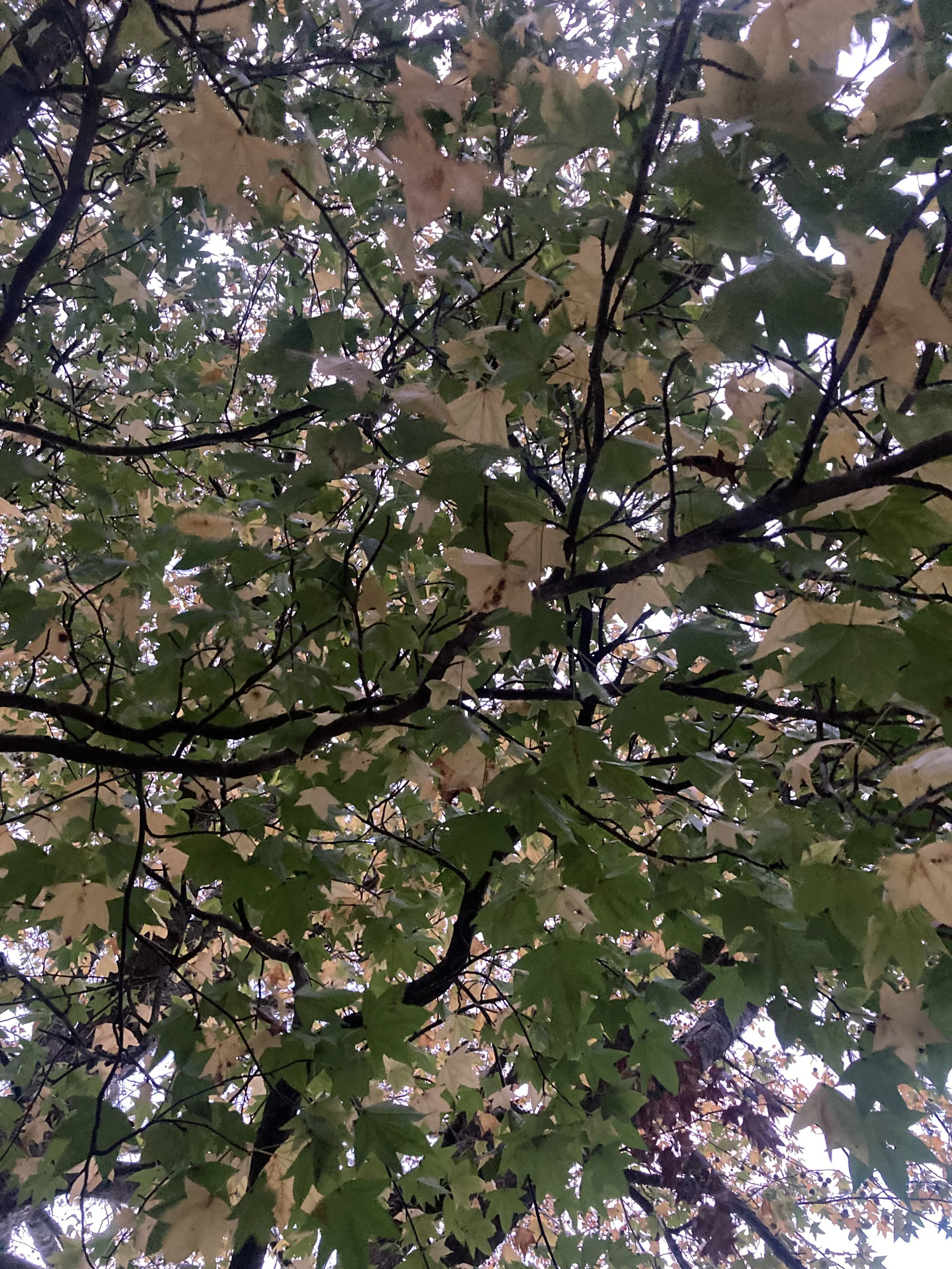In Chinese medicine the two lobes of the lungs are referred to as the ‘Lung’. In this article I will introduce an understanding of the Lung from a Chinese medicine perspective. This will include a discussion on the functions of the Lung, its relationship with other aspects of the body, its resonance with the emotions, the soul-spirit, and with processes in the natural world.
primary functions of the lung
One of the primary functions of the Lung is the regulation of all rhythms in the body. As such, it is known as the master of qi, allowing qi to be smoothly disseminated throughout the body. This particular function ties in closely with the observable rhythm of the beating of the heart and with breathing. We receive qi from the air through the breath. The Lung has a reciprocal relationship with the Heart, where qi and blood come to be interwoven in the chest. Another primary function of the Lung involves the defensive system of the body, which from a biomedicine perspective correlates with respiratory, immune and skin systems. The other primary interrelated function of the Lung involves fluid metabolism in the body, where the Lung functions in unison with other key organs involved, particularly the Kidney and Spleen. The Lung also functions energetically very closely with the Large Intestine and the Bladder: influencing immunity, the elimination of waste and toxins, the letting go of emotions particularly sadness and grief, but also anger, rage and fear. We often think of the Large Intestine as having a purging quality to it, and the Lung helps in the descending action of purging through the bowels, as well as a descending function of elimination of urine through the Bladder. Ideally, when the Lung is functioning well, it has a natural descending function where the breath goes deeply into the Kidney and reproductive-sexual organs of the lower abdomen. When the Lung qi rises upwards instead of going down, we see this clearly in a cough or in the case of rapid chest breathing.
Smell, Flavour, Foods and Medicinals
In relation to the primary senses, the Lung corresponds with the nose and smell. The flavour related to the Lung is often translated as pungent, spicy or acrid. Think of the flavours that bring on a sweat, or that have a strong pungent smell. Many spices we use in moderation have these qualities, for example: chilli, garlic, sichuan pepper, black pepper, horipito (Pseudowintera colorata – a native endemic plant of Aotearoa), ginger, cinnamon e.t.c. Many medicinal plants which are used for the Lung also have a pungent or acrid quality. Other foods that resonate with the Lung include all those in onion family (onion, chive, shallot, scallion or spring onion, cruciferous vegetables (e.g. cabbage, brocolli, turnip), radishes, watercress, acrid flavoured beetroot, almonds, mushrooms, pear and persimmon. White coloured foods are also known to resonate with the Lung.
During autumn the atmosphere is typically dry and it is often when first frosts appear. The Lung resonates with the dryness of autumn and so Chinese medicine recommends the avoidance of environments which are excessively damp, as well as the over-consumption of foods which are damp forming (e.g. oily greasy food, cow dairy products, very sweet foods and refined sugar, cold and frozen foods). This is especially important during the onset of a cold or flu when excess mucus and dampness can impair the Lung function. This image on the right is a Gingko leaf, which resembles a lobe of the Lung. Gingko leaf is used in Chinese herbal medicine to treat the Lung, particularly for specific cases of chronic coughs and excess dampness and phelgm.
Metal AND aUTUMN
The Lung relates to the dynamic agent Metal (another term used for dynamic agent is ‘dynamic phase’ or ‘element’) in the Chinese system of the 5 phases (Wu xing: Fire, Earth, Metal, Water and Wood). Metal corresponds to the colour white and the season of autumn. Autumn is a time when naturally a process of turning more inward is initiated. This is a yin process of letting go and the beginings of death and decay. We see this in nature as the leaves of deciduous trees begin to fall, the nuts and seeds are falling and ready for harvest, the summer fruits begin to decay and rot, the fungi kingdom rises up through the earth, the signs of the first white frost appear in cooler climates.
GRIEF AND SADNESS
The Lung relates to the emotion of grief, the sadness and tears that pour from the Heart. In autumn there is a natural movement toward letting go of past feelings of loss and sadness. It is as though nature is asking us to enter into this place of deepening into our body experience of being on earth. We are given a push to witness our grief and sadness and in this process to let go of the weight of carrying it around from season to season, year to year. It is a healthy and natural expression of the Lung to grief during autumn. We may grieve the loss of a person, a homeland, a feeling of belonging, our ancestors, the grief of a barren harvest, a cherised pet. When the Lung is given space to grieve it naturally overtime strengthens the Lung’s resilience and enhances its functional roles of immunity, regulation of the rhythms in the body, and fluid metabolism. It also allows for the possibility to experience more content feelings such as happiness, joy, awe, compassion, peace.
VENUS AND THE Lung
In the Chinese system of the 5 phases, the 5 main planets observable to the eye in ancient times were correlated with the 5 dynamic agents (Fire - Mars, Earth - Saturn, Metal - Venus, Water - Mercury, Wood - Jupiter). Venus is correlated with Metal and the Lung. Interestingly it is Venus who is often related to the voice, melody or prosody of voice through the association to the tropical astrological sign of Taurus. Taurus as an astrological constellation in the zodiac may also be said to be related archetypally and symbolically to our embodied relationship to the inner self (i.e. our inner relationship to our body). This correlates with the Chinese understanding of the physiological function of the Lung and the soul aspect of the Lung.
The Po : the soul of the body
The soul or spirit aspect of the Lung is known as Po in Chinese. The Po has been translated as the corporeal or animal soul. It is known as the soul that is closely related to the earthly aspect of us, to our body. The Po guides us to eat and breath and expresses itself through the vitality and strength seen in the body. There is that saying to be ‘as white as a ghost’ or ‘as white as a sheet’, this is when the strength of the Po is weakened. When a baby is born from the womb and arrives on earth it takes a breath and lets out a scream, this is the manifestation of the vitality of the Po.
“ The Po cannot separate from the body and the substance of the body, so they remain attached. They cannot travel or wander, but are held within the body, so when the body decomposes, they pass with the material substance of the body back to the earth. They remain attached to the bones, and when the bones finally dry up, they become the power of the substance of the earth again”.
Aspects of Spirit – Elizabeth Rochat de la Vallée
The white colour of bones is symbolic of the Po, and the Lung.
“In Chinese the character for white also means to be pure and clear, and also the verb to clear - to make void and empty. It suggests the Po are able to cleanse feelings and emotions”
Aspects of Spirit – Elizabeth Rochat de la Vallée
What does it mean to grieve deeply? To feel the grief seeping out of our bones? Are these not the tears of our ancestors, our collective humanity, our collective earth, as well as the tears in our own soul?
We can cleanse our bodies in autumn through this yin process of creating quiet, slowing down, letting go, grieving and preparing for the next phase in the cycle.
Winter: when we enter into the fertile dark void and go down into the depths of the earth and the Kidneys ….

















